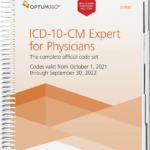It is the goal of every skilled nursing facility (SNF) to provide quality resident care. Inaccurate ICD-10-CM coding can interrupt that goal, leading to frustration, confusion, inadequate care planning and delayed reimbursement. Additionally, Medicare and Medicare Advantage audits could reveal inaccurate ICD-10-CM coding leading to accusations of errors, fraud, waste, abuse and even suspended reimbursement. The Centers for Medicare & Medicaid Services (CMS) recently announced it will adjust nursing home payment rates downward by 4.6 percent to account for unintentional overpayments in the transition to the Patient Driven Payment Model (PDPM). This is not welcome news for facilities that have already been juggling higher operating costs and trying to attract staff during the pandemic.
Facilities deserve to be paid for the care and services they provide. According to Supply360’s regulatory resource partner, The Compliance Store, accurate coding is essential for avoiding errors that could impact care quality.
“Diagnoses tell the story and are a starting point for how to provide appropriate resident care,” said Michele Mummert, RN, director of research and development for The Compliance Store.
PDPM changes
In 2019, the CMS changed to PDPM for SNFs. This change moved away from a payment model that was based primarily on the amount of reimbursable therapy minutes provided to the resident. The new model was meant to improve payment accuracy and appropriateness by focusing on the resident and his/her needs, rather than the volume of services provided.
CMS also hoped to streamline complicated and costly paperwork requirements for performing and tracking mandatory resident assessments by significantly reducing the reporting burden. At the time, CMS estimated this would save providers $2 billion over 10 years. With payments hinging on residents’ health characteristics and less focus on assessment requirements, it became essential that facilities performed careful initial assessments of residents and accurately documented their diagnoses.
“If your coding is not accurate or supported by documentation, you may not get paid appropriately for the care provided,” Mummert explained.
ICD-10-CM coding challenges
However, some could argue that CMS’ well-intentioned new payment model created almost as many challenges as it solved. For billing and proper reimbursement, PDPM relies on the classification of the resident into a clinical category based on the primary diagnosis for the SNF stay. The payment assessment (MDS) must be coded accurately at I0020B, primary diagnosis, in order for the resident’s clinical mapping to produce an accurate PDPM code. The diagnosis that determines the resident’s primary medical condition category also describes the primary reason for admission to the SNF.
The International Classification of Diseases, Tenth Revision, Clinical Modification (ICD-10-CM) manual can be tricky because of the multiple coding options based on specificity. Coding utilized in acute care settings does not automatically translate to the level of care a resident may need in a post-acute care setting such as an SNF.
“You’re caring for the person at a different level than an acute one. They may have other chronic conditions in relation to the reason for the acute stay that can impact their therapy or nursing needs,” Mummert said.
Additionally, the appropriate diagnosis may not be obviously documented in previous records or may require physician clarification. Relying on shortcuts or websites is ineffective and results in coding errors. The latest ICD-10-CM coding manual has many nuances and is regularly updated. Thus, accurate coding requires an understanding of how to utilize the ICD-10-CM coding manual and thorough investigative skills.
“It is essential to understand how the ICD-10 CM coding works to lay the groundwork for planning the resident’s care,” Mummert said.
Discount ICD-10-CM help
June 21-22, The Compliance Store will host an opportunity for long-term care professionals to learn how to get the most out of PDPM. Renowned long-term care educator, Carol Maher, will teach the mastery of coding during a two-day live virtual workshop. The ICD-10-CM Coding for Post-Acute Care live virtual workshop is a must for long-term care professionals who desire quality resident care and smoother billing cycles.
Maher is the director of education for Hansen Hunter & Co. P.C. She is a Certified Professional Coder (CPC) and a Board-Certified Gerontological Registered Nurse with more than 30 years of long term care experience. She is also the author of Long-Term Care MDS Coordinator’s Field Guide (HCPRO 2016).
Supply360 and Turenne PharMedCo Pharmacy Services customers can receive a coupon code for a $50 discount by contacting their Customer Sales Representative. Non-customers may register for $300.
Hands-on learning
The two-day course will walk participants through the process of determining and identifying the most appropriate ICD-10-CM codes. Participants will learn the correct process for using the ICD-10-CM manual, from identification of the main term through the final code selection and review the ICD-10-CM coding guidelines and chapter-specific guidelines. The webinar will provide 14.0 contact hours for licensed nurses and 13.5 hours for NHAs (NAB).
Participants must have the latest ICD-10-CM coding manual. Their manual must have codes that are valid from October 1, 2021, through September 30, 2022. There are several publishers, however, click here to learn about the manual that will be used for the webinar.
Join us for this special educational event and never be uncertain again about coding diagnoses! Registration is now open. Click here for more information and register today!


